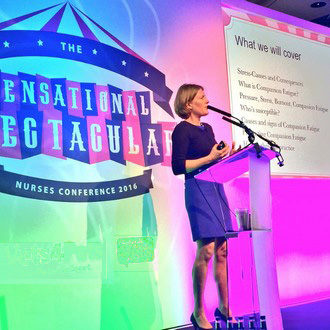I’m a morning person – I’m up early (this might actually be something to do with the fact that I have young children and a husband who is a senior equine vet, rather than a natural propensity to dawn rising!). My mind is buzzing with ideas and checklists long before the first coffee of the day. Once the children are at school, I love to head out on a run – I’ve learned that the time this takes is not a source of guilt to be squashed in a busy day, rather an essential productivity tool – I have my best ideas on those morning runs. Many’s the article composed, workshop sketched out and solution imagined to a knotty problem whilst pounding the country lanes because the beginning of the day is when I’m at my most energetic and productive.
Of course it’s not the same for everyone – I know lots of people who recoil in horror from the idea of a morning brainstorm, opting instead for a late-night focus on planning and strategic thinking. Either approach is just fine, but you’ll be at your best when you identify when your personal energy levels peak and then structure your day as much as you can to take this into account. Perhaps you’re thinking, “If only it were that easy! Unfortunately team meetings are always at lunch time and clients won’t thank me for calling them at 7am when I’ve just worked out a strategic plan for their next project”. And you’d be right – I’m not suggesting that colleagues and clients will bend their own days to suit yours. What this is about is starting to look differently at how you approach routine tasks – sitting down to the dreaded chore of going through the accounts at a time when your energy levels are at their lowest ebb is certainly not going to be conducive to getting them done efficiently and accurately.
If you’re not sure how your natural flows of energy shape up, try keeping a log for a week. Record your energy level (on a scale of 0 to 100%) for every waking hour, for seven days. You’ll see a pattern emerging, not only for times of day, but also days of the week when your energy levels are highest.
Next make a list of your regular tasks (checking voicemails, completing paperwork, writing papers, teaching students etc.) and sort them into categories:
- Routine
- Creative
- High concentration
- High energy
Identifying factors beyond your control is the next stage. Do some tasks require you to meet with others who may only be in the office at certain times on set days? Do you need access to files or resources in the office for certain jobs, making them difficult to carry out at home late at night? There may also be practical considerations at play – many people spend several hours a day driving and these blocks of time can be very useful for catching up with voicemails, returning clients’ calls and blue-sky thinking.
Taking these pre-determined aspects of your working week into account, allocate your routine tasks to regular times – carry out creative and high concentration tasks when your energy levels are naturally highest and plan to do the easier or more mundane jobs when energy levels may be lower. Smartphones make it very easy to capture ideas by recording voice memos on your hands-free kit, so there’s no need to miss out if your creative time happens to occur whilst you’re driving!
Finally, taking good care of yourself can help boost your energy levels generally. Drink plenty of water throughout the day in order to avoid the tiring and energy-sapping effects of dehydration. A strong cup of tea or coffee will provide a caffeine injection if you need a little extra help, but avoid excessive sugary snacks as the resulting crash negates the positive (but short-lived) energy boost of the sugar rush! Snacking on smaller meals throughout the day will help keep energy levels high, whereas eating one large meal in the middle of day may leave you feeling sluggish for much of the afternoon. Try to have a proper break from work for at least fifteen minutes at lunchtime*, grabbing some fresh air and a short walk wherever possible. There are also some great apps and online tools to help promote mindfulness – taking some time out to de-stress and re-energise will help boost your productivity and motivation for the second half of the working day, not to mention the rest of the week.
*And don’t roll your eyes! A minimum of fifteen minutes is all I’m asking for, in order to make you more productive for the rest of the afternoon. The phone calls can wait that long!
If you would like to take control of your life and career, my online personal development programme MyLifeStrategy can help you to overcome the personal and professional challenges you face on a daily basis and learn practical skills and techniques to make a real difference to you and your life.
I’ve developed the Time Management for the Time Poor module to help you to get the most out of your time. It will show you how to manage yourself and your behaviours, how to optimise your time, how to prioritise, delegate, stop procrastinating and put yourself back in control of your life and your time.








